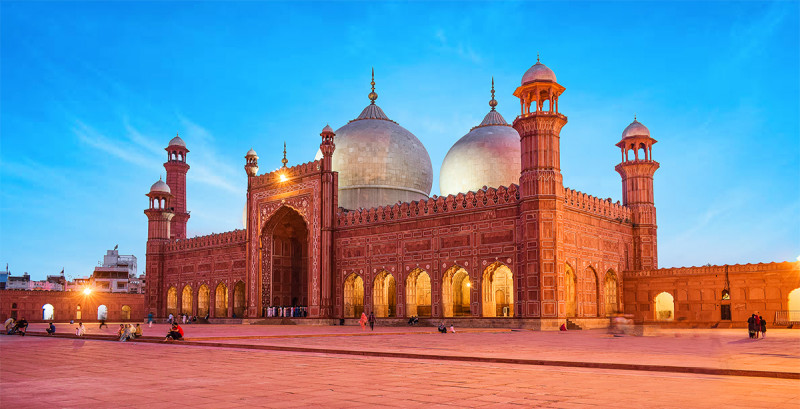Lahore is the capital and largest city of the Punjab province in Pakistan, and the country's second-largest city overall. With a population exceeding 14 million, it ranks among the world's largest cities. Lahore serves as a significant industrial, educational, and economic center for Pakistan. Historically, it has been the cultural capital of the broader Punjab region and is known as one of Pakistan's most liberal and cosmopolitan cities.
1940: Lahore Resolution
In 1940, under the leadership of Muhammad Ali Jinnah, the All India Muslim League passed the Lahore Resolution, demanding the creation of Pakistan as a separate homeland for the Muslims of India.
1941: Lahore Census
The 1941 census revealed Lahore's population composition: 64.5% Muslim and 35% Hindu and Sikh, which became a point of contention regarding the Radcliffe Line.
April 1947: Partition Riots
In April 1947, Lahore experienced severe riots during the Partition, leading to the destruction of 6,000 homes.
August 1947: Mass Exodus
By late August 1947, a significant portion of the Hindu and Sikh populations, approximately 66%, had left Lahore due to increasing violence and uncertainty about the city's fate during the Partition.
August 1947: Awarding Lahore to Pakistan
On August 17, 1947, Lahore was awarded to Pakistan, based on the Muslim majority in the 1941 census, and became the capital of the Punjab province.
1947: Partition of British India
In 1947, Lahore became the capital of Pakistan's Punjab province following the success of the Pakistan Movement and the subsequent partition of British India. The city experienced some of the worst rioting during the Partition period preceding Pakistan's establishment.
1947: Destruction of Shah Alami Bazaar
Shah Alami Bazaar, the former commercial heart of the Walled City was destroyed in the 1947 riots.
1949: Reconstruction of Shah Alami Bazaar
Reconstruction of the Shah Alami Bazaar began in 1949 after it was destroyed in the 1947 riots.
1950: Economic Struggles
By 1950, Lahore's manufacturing sector was struggling, with only 27% of its units operating, highlighting the city's economic challenges following Partition.
1951: Construction of Tomb of Allama Iqbal
In 1951, the Tomb of Allama Iqbal was constructed to honor the philosopher-poet who inspired the Pakistan movement.
1955: Lahore as Capital of West Pakistan
In 1955, Lahore was selected as the capital of all West Pakistan.
1959: Completion of Gaddafi Stadium
In 1959, Gaddafi Stadium, a Test cricket ground in Lahore, was completed.
1965: Indo-Pakistani War
In 1965, Lahore was a target of Indian aggression during the Indo-Pakistani War.
1968: Completion of Minar-e-Pakistan
In 1968, Lahore's iconic Minar-e-Pakistan was completed, marking the location where the Pakistan Resolution was passed.
1970: End of single-unit period
In 1970, the single-unit period, during which Lahore served as the capital of all West Pakistan, came to an end.
1974: Islamic Summit Conference
In 1974, the second Islamic Summit Conference was held in Lahore.
1981: UNESCO World Heritage Site
In 1981, the Lahore Fort and adjoining Shalimar Gardens became a UNESCO World Heritage Site.
1992: Riots After Babri Masjid Destruction
In 1992, riots occurred in Lahore following the destruction of the Babri Masjid in India, targeting non-Muslim monuments.
1996: Cricket World Cup Final
In 1996, the International Cricket Council Cricket World Cup final match was held at the Gaddafi Stadium in Lahore.
1998: Population Growth Rate
The 2017 Census revealed Lahore had an annual population growth rate of 4.07% since 1998.
2002: Compressed natural gas requirement
Since 2002, all auto rickshaws in Lahore have been required to use compressed natural gas as fuel.
June 2003: Record High Temperature
On June 5, 2003, Lahore recorded its highest temperature at 50.4 °C (122.7 °F).
2003: Opening of new passenger terminal
In 2003, Allama Iqbal International Airport opened a new passenger terminal, replacing the old terminal, which then became a VIP and Hajj lounge.
January 2005: First Lahore Marathon
On January 30, 2005, the first Lahore Marathon was held, sponsored by Standard Chartered Bank.
January 2006: Second Lahore Marathon
On January 29, 2006, the second Lahore Marathon was held, with over 22,000 participants.
January 2007: Third Lahore Marathon
On January 14, 2007, the third Lahore Marathon was held.
June 2007: High Temperature Recorded
On June 10, 2007, a temperature of 48 °C (118 °F) was recorded in Lahore.
2007: Kite-flying ban reimposed
In 2007, the ban on kite-flying in Lahore, which was temporarily lifted for two days, was immediately reimposed after 11 people were killed due to celebratory gunfire, sharp kite-strings, electrocution, and falls related to the competition.
2008: GDP Estimate
As of 2008, Lahore's GDP by purchasing power parity was estimated at $40 billion.
2009: Walled City Restoration Project
In 2009, the Walled City of Lahore restoration project commenced, with the Punjab government restoring the Royal Trail from Akbari Gate to the Lahore Fort with funding from the World Bank.
May 2010: Inauguration of Lahore Expo Centre
The Lahore Expo Centre was inaugurated on May 22, 2010, as one of the city's biggest projects.
2011: Opening of Lake City golf course
In 2011, Lake City, a 9-hole golf course, opened in nearby Raiwind Road.
2013: Punjab Local Government Act
As per the Punjab Local Government Act of 2013, the Mayor of Lahore is the elected head of the Metropolitan Corporation of Lahore.
2014: Renovation of Walled City
In 2014, the Walled City of Lahore was renovated, increasing its popularity as a tourist destination.
2016: Election of Mayor of Lahore
In 2016, Mubashir Javed of the Pakistan Muslim League (N) was elected mayor of Lahore.
May 2017: Rollout of Metro Trains
On May 16, 2017, CRRC Zhuzhou Locomotive rolled out the first of 27 trains for the Orange Line Metro Train in Lahore.
2017: Tribal Demographics
According to the 2017 Pakistani census, Arain Punjabis constituted the largest tribal group in Lahore at 40%, followed by Punjabi-Kashmiris at 30%.
2017: Pashtun Population Estimates
In 2017, some Pashtun nationalist parties argued that the Pashtun population in Lahore was underestimated in the census, claiming numbers between 1 million and 1.5 million.
2017: 2017 Census Results
The 2017 Census reported Lahore's population at 11,126,285, with a gender distribution of 52.35% male, 47.64% female, and 0.01% transgender.
August 2018: Guangzhou flight begins
In August 2018, Allama Iqbal International Airport began passenger and cargo flights to Guangzhou.
2018: Test trials for the Orange Line
Successful initial test trials for the Orange Line Metro train were run in mid-2018
2019: Auto rickshaws in Lahore
In 2019, Lahore had approximately 82,000 auto rickshaws and 65,000 motorcycle rickshaws facilitating public transport.
October 2020: Commercial Operations of Orange Line
Commercial operations for the Orange Line Metro Train in Lahore began on October 25, 2020.
2023: Religious Demographics
According to the 2023 Census, Muslims constitute 95.26% of Lahore's population, up from 94.7% in 2017.
2023: Introduction of all-electric rickshaws
In 2023, all-electric rickshaws were introduced in Lahore.
August 2024: Highest Rainfall
On August 1, 2024, Lahore recorded its highest rainfall in a 24-hour period at 337 millimetres (13.3 in).
2024: World's Most Polluted City
According to the World Air Quality Report in 2024, Lahore is one of the world's most polluted cities.
2024: Christmas celebrations in Lahore
In 2024, Lahore's churches, shopping centers and public buildings were elaborately decorated for Christmas celebrations.
2025: Projected GDP
Lahore's GDP is projected to reach $102 billion by 2025, with a growth rate of 5.6% per annum.
Mentioned in this timeline
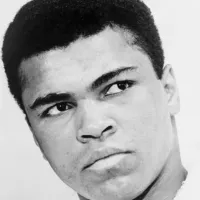
Muhammad Ali nicknamed The Greatest was an iconic American professional...
India officially the Republic of India is a South Asian...
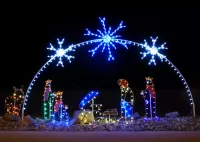
Christmas is an annual festival celebrated on December th commemorating...
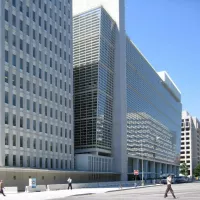
The World Bank is an international financial institution offering loans...
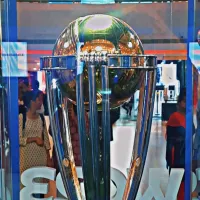
The ICC Men's Cricket World Cup is a quadrennial international...
Pakistan officially the Islamic Republic of Pakistan is a South...
Trending

1 month ago Trump Withdraws Nominee for Top IRS Lawyer Amidst Loomer Controversy.
2 months ago Orlovsky urges more Derrick Henry carries; Gronkowski warns AFC Contender faces disaster

16 days ago Yankees and Mets compete for Cody Bellinger; Yankees consider Kyle Tucker.

Alan Jackson is a highly successful American country music singer-songwriter celebrated for his neotraditional country sound He distinguishes himself by...

3 months ago Hilary Duff Celebrates Birthday, Attends Fashion Week, and Debuts Bold Manicure.
2 months ago Karoline Leavitt Blasts Reporter Over 'Bulls--t' Questions; White House Responds Wildly.
Popular

Candace Owens is an American conservative political commentator and author...

Ilhan Omar is an American politician currently serving as the...

XXXTentacion born Jahseh Dwayne Ricardo Onfroy was a controversial yet...

Frederick Christ Trump Sr - was an American real estate...

Oprah Winfrey an American talk show host television producer actress...

Charles James Charlie Kirk was a prominent American right-wing political...
